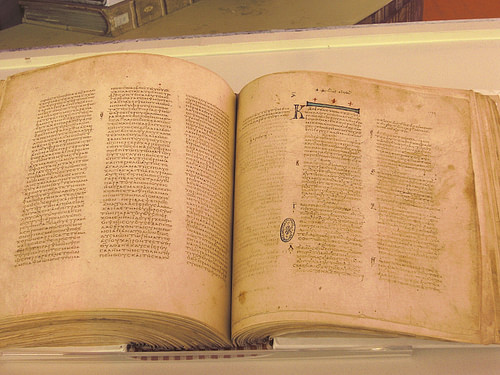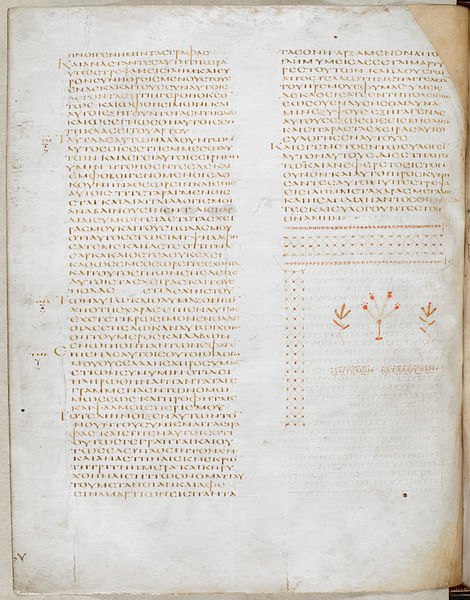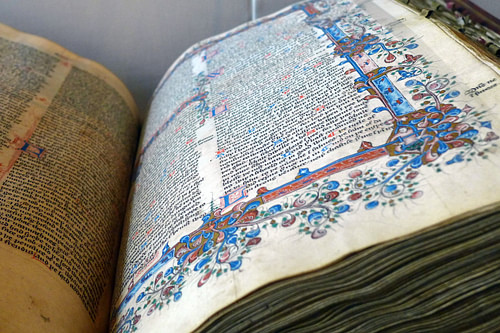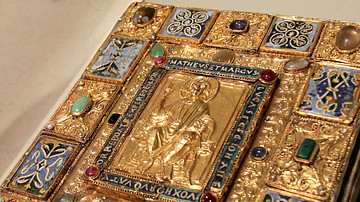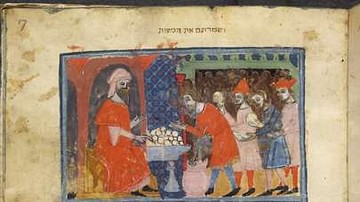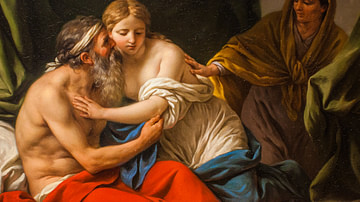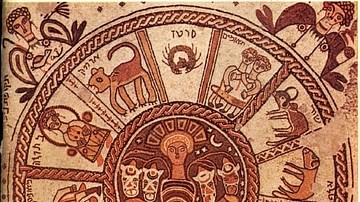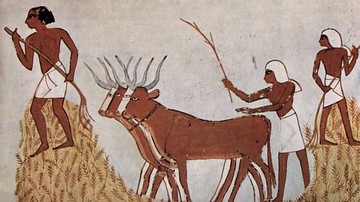The books of the New Testament were written in the 1st century CE. As Christianity spread in the 2nd century CE, many copies were made, some by non-professionals. Early manuscripts are considered to be closer to the original than later manuscripts as they are likely to have gone through fewer copying cycles.
Text critics have created various rules for selecting the best text. One such rule claims that the more difficult reading is best. Scribes might want to make scripture easier to understand, at least in their own minds. A pious scribe might be more reluctant to remove material than to add it. Scholars have to think of reasons why a scribe might change a text and analyze which reason is most plausible in each case. Analyzing manuscripts like this consumes scholarly resources, hence a need for text-types. This allows critics to focus their attention on a group of the earliest manuscripts. There are three main text types:
- Alexandrian
- Western
- Byzantine
Development of Text-types
Copies with popular variations are called the Western Text. Scholars refer to this text as 'free' or 'uncontrolled'. It is prone to paraphrasing, clarification, and other additions, and it may have been influenced by non-professional copyists. In the early 3rd century CE, Origen tried to tackle this problem by examining numerous manuscripts and selecting those he judged best. From the quotations he gives, we can see that the text he chose corresponds to the Alexandrian text. After Constantine’s conversion to Christianity in the 4th century CE, this text was widely and carefully copied.
In the late 3rd century CE, Lucian of Antioch (c. 240-312 CE) tried a different approach to the problem of variant texts. He created a recension based on various manuscripts of the Western type. He and his scribes were anxious not to lose any of what was understood as God's words. Compared to the Alexandrian text, there are additional phrases and even stories in the Byzantine text that he produced. Many Christians preferred this text because it harmonized the four gospels into a more coherent story and corrected grammatical mistakes. It was used by churches of the Byzantine Empire for a thousand years. The oldest surviving example of Byzantine text is in the homilies of John Chrysostom (c. 349-407 CE), a churchman from Antioch.
Alexandrian
The name 'Alexandrian' is from Codex Alexandrinus, the first manuscript of the Alexandrian type to gain the notice of scholars. The Codex Alexandrinus was donated by Patriarch Cyril Lucaris to King Charles I of England (r. 1625-1649) in 1621, and its name comes from a note on the manuscript which suggests that it was once kept in Alexandria.
The Alexandrian text is shorter and less polished than those of other types. Of nearly 6,000 surviving manuscripts, about 30 or so are of the Alexandrian type, which tends to be the most concise. The earliest surviving witnesses are Papyrus 46 and Papyrus 66, both dating to about 200 CE. Modern translations of the New Testament such as the English Standard Version use a Greek text based on manuscripts of this type.
| Name | Designation | Date (century) | Content | Location |
| Papyrus 46 | Chester Beatty II | Third | Pauline epistles | Dublin and U of Michigan |
| Papyrus 66 | Bodmer II | Third | Gospel of John | Bodmer Library, Geneva |
| Papyrus 75 | Bodmer XIV-XV | Fourth | John and Luke | Vatican Library |
| Sinaiticus | א (aleph) | Fourth | New Testament | British Library |
| Alexandrinus | A | Fourth | NT | Vatican Library |
| Vaticanus | B | Fifth | NT | British Library |
| Ephraemi Rescriptus | C | Fifth | NT | French National Library |
The Alexandrian text is quoted by Clement in the late 1st century CE, Origen in the early 3rd century CE, and Didymus the Blind and Cyril in the 4th century CE. The Alexandrian text has been reconstructed based on a group of ancient manuscripts called the 'four great uncials', manuscripts written in capital letters. The four uncials are:
- Codex Vaticanus
- Codex Sinaiticus
- Codex Alexandrinus
- Codex Ephraemi Rescriptus
The scribes wrote in uncials from the 2nd century to the 8th century CE, but in the 7th and 8th centuries, the quality of handwriting declined and manuscripts became difficult to read. Miniscule (lower case) letters, which are smaller and can be written more rapidly, were introduced in the 9th century. There was a great deal of copying activity in the 9th century as uncial texts were recopied as miniscules, and the transition was so complete that the next generation did not learn to read uncial script. Parchment was taken from old codices, washed, and reused, as in the case of Ephraemi Rescriptus.
Western
The Western text, or D Text, often paraphrases and adds to the Alexandrian text. The name 'Western' originates with Semmler, an 18th-century text critic, who argued that the text originated in the Latin-speaking area around the western Mediterranean. The suggestion is that its errors can be blamed on scribes who were not proficient in Greek, but this theory remains unconfirmed. Some changes may have been motivated by a desire to harmonize the four gospels into a coherent story. Despite its antiquity, critics generally reject this text-type as too free.
| Name | Designation | Date | Content | Location |
| Papyrus 38 | Papyrus Michigan | c. 220 | Frag. of Acts | University of Michigan |
| Papyrus 48 | Third century | Frag. of Acts | Laurentine Library, Florence | |
| Bezae | D(ea) | c. 400 | Gospels and Acts | Cambridge |
| Claromontanus | D(p) | c. 550 | Pauline epistles | French National Library |
The Western text is quoted by 2nd-century CE writers Marcion, Tatian, Irenaeus, and Tertullian. Papyrus 38 and Papyrus 48 are both Western and date to c. 300 CE. The text has been reconstructed from Codex Bezae, a 5th-century manuscript of the gospels and Acts, and Codex Claromontanus, which has the Pauline epistles and dates from about 550.
Bezae is the only early manuscript with the story of the woman taken in adultery (John 7:53-8:11). The passage is not given in the five best witnesses for the Gospel of John, namely Papyrus 66, Papyrus 75, Codex Vaticanus, Codex Sinaiticus, and Codex Alexandrinus, and Chrysostom skips over the passage in his homilies. However, letters by Didymus (c. 313-398 CE) include a discussion of the story, so we know that it circulated in 4th-century Egypt. This means that the story, the source of which Didymus gives as "certain gospels", is at least as old as Vaticanus or Sinaiticus, but the earliest surviving example of the full story is in the 5th-century Bezae. It is thought that John is a product of collective writing and that it was put together in stages, which means that more than one text can be considered original. The passage has a unique 'floating' property and appears in various locations in different manuscripts. Despite these uncertainties, the passage has been retained in modern translations.
Byzantine
After the persecution of Christians by Roman emperor Diocletian (r. 284-305 CE), there was a need to replace manuscripts that had been destroyed. As part of this project, Lucian of Antioch is said to have created a recension of various manuscripts of the Western type. The earliest witness for the Byzantine text-type is John Chrysostom, who quoted from it extensively in his homilies. It was a standard text that would be produced by trained scribes at scriptoria for many centuries. Some 95 percent of surviving manuscripts are of the Byzantine text-type.
The Byzantine text-type has more polished grammar, as well as additions that address inconsistencies and theological issues. There are several passages in the Byzantine text which were copied from another place in scripture. For example "bless those who curse you, do good to those who hate you" (Matthew 5:44, KJV) is adapted from Luke 6:27-28.
One verse with readings that are used to classify manuscripts is Mark 1:2. Alexandrian manuscripts read "As it is written in Isaiah the prophet" while Byzantine manuscripts say "in the prophets."
In Matthew 2:18, the Alexandrian text reads "weeping and great mourning" while the Byzantine text reads "lamentation, weeping, and great mourning." Both texts are quoting Jeremiah 31:15, but the Alexandrian text is translated from Hebrew while the Byzantine text uses the Septuagint, a Greek translation. The grammar used is the most reliable test of text-type, but this test does not translate into English.
From Ancient to Modern Text
The modern version of the Byzantine text is Textus Receptus, printed by Desiderius Erasmus in Basel in 1516. The King James Version of the Bible, ordered by James I of England (r. 1603-1625), and other translations from the era of the Protestant Reformation used this text. In 1720, British royal librarian Richard Bentley published a pamphlet that proposed that the Textus Receptus be replaced with a Greek text based on the Codex Alexandrinus. Bentley used quotes from Origen to show that the Textus Receptus was a corruption of the ancient text.
In the early 19th century, German philologist Karl Lachmann developed methods which allowed a critic to determine which manuscript variants were closest to the original. He assigned manuscripts to various text types. In 1850, he published a Greek text based on the Codex Alexandrinius and on quotations from the church fathers. In 1881, B.F. Westcott and F.J.A. Hort published a Greek text based on manuscripts of the Alexandrian type. The Codex Vaticanus, a manuscript at the Vatican Library, was used whenever possible. The Codex Sinaitcus, discovered at Saint Catherine's Monastery in Sinai in 1844, was used in places where the Codex Vaticanus was damaged or unclear. As the biblical Book of Revelation is missing from both codices, it was taken from the Codex Alexandrinus.
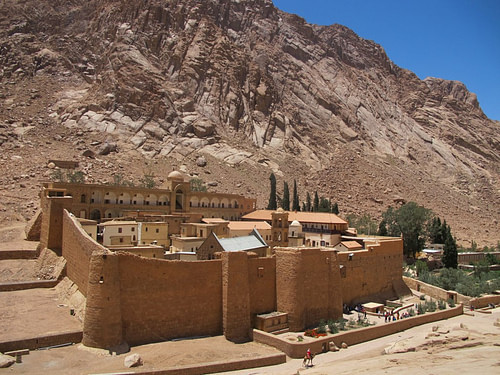
The UBS (United Bible Societies) text used by modern translators is based on the Codex Vaticanus and the Codex Sinaiticus; these predate the manuscripts that Erasmus used by about eight hundred years. Compared to the uncials, the manuscripts that Erasmus used could be copies of copies of copies.
With the publication of the Chester Beatty papyri in 1933-1958 and the Bodmer papyri in 1961, text critics rushed to include them in the Critical Text and translators updated the Revised Standard Version. In 1962, a papyrus with a text close to Vaticanus was dated as being over a century older than the great uncial based on handwriting analysis. This was Papyrus 75, a papyrus codex of the gospels of Luke and John. Scholars considered the dating as proof that the Codex Vaticanus represented an exceptionally old text type. However, in 2016, Brent Nongbri found the writing compatible with a broader range of dates. For two lengthy handwritten documents, the agreement between Papyrus 75 and Codex Vaticanus is extremely high. This suggests that they date from the same period and that may even have been copied from the same model. Papyrus 75 was discovered as part of a group of 4th- and 5th-century papyri.
Although the redating of P75 dashed the hope of creating an authoritative text based on a 3rd- century papyrus, the view that the Alexandrian text was in circulation well before the Codex Vaticanus is supported by the 3rd-century quotations from Origen cited by Bentley.
Among modern translations, the New King James Version uses Byzantine text with footnotes to explain differences with the Alexandrian text. Almost all other modern translations use either the Nestle-Aland or the UBS versions of the Alexandrian text.
Conclusion
The ideal of text types is belied by the individuality of real-life manuscripts. The Codex Alexandrinus itself is classified as Byzantine in the gospels and Alexandrian only with respect to the epistles. Text-type terminology encourages an evolutionary view in which, say, proto-Alexandrian texts lead to Alexandrian texts, or Western texts lead to Byzantine.
As an alternative to text types, the scholars Kurt and Barbara Aland have created a category system. When revising a passage, the United Biblical Societies committee consults a collection of five or six of the earliest and most reliable manuscripts. The reading of Vaticanus is followed as long as there is even one other manuscript that agrees with it. If not, the committee will follow the reading of Sinaiticus or, failing that, Alexandrinus. For all the papyrus discoveries of the last century and the talk of 'reasoned eclecticism', the process is still dominated by the same collection of manuscripts used by Westcott and Hort.
In recent years, scholars have begun to use the term 'B Text' instead of Alexandrian, where 'B' is a symbol for Vaticanus. The Alands call this text the 'Bא [bee aleph] Text', for Vaticanus/Sinaiticus text. In this style, the Western Text is the 'D Text,' 'D' being a symbol for Bezae/Claromontanus.
